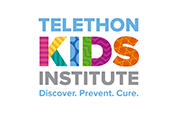Young Minds Matter Survey results
Survey estimates
Weighting and rounding
All estimates have been derived from the survey sample, and weighted to represent the population of children and families in Australia. The estimates have been rounded, generally to three significant digits. As such, discrepancies may occur between the sums of component items and their totals.
Confidentiality and suppression of cells
Estimates have been suppressed where there were less than 5 survey respondents contributing to a cell. These appear as blank cells in tables and are omitted from charts.
Accuracy of estimates
Estimates are shown along with 95% confidence limits. Because Young Minds Matter was based on a sample and not a full census of Australian children and adolescents, the survey estimates could differ from the results that would be obtained from a full census due to random chance. The 95% confidence limits give an indication of the degree of sampling variability associated with the estimates. As a general rule, estimates that are based on larger numbers of contributing children are more accurate than those where fewer sample children contribute to the estimate. For instance, using the remoteness classification, the prevalence estimates for Major Cities are more accurate than those for Remote Australia because a higher proportion of the sample was located in Major Cities.
As an approximate rule of thumb, when comparing two prevalence estimates, if the ranges for the confidence limits of both estimates overlap, there is a higher chance that any difference between the two figures could be attributed to chance variation. When the ranges of the confidence limits do not overlap there is a greater chance that a full census would also have found a difference in the figures being compared.
Use of services
Parents or carers were asked about their child’s or adolescent’s use of services for emotional or behavioural problems in the previous 12 months. These services include use of any health and school services, but only those telephone and online services where these provided structured or personalised information.
Children or adolescents were defined as having used services when they had used at least one of the following services: a consultation with a health service provider, a hospital admission, a headspace service, a school service, a telephone counselling service and/or online assistance for emotional or behavioural problems in the 12 months prior to interview.
Health services
These are any service provided by a qualified health professional regardless of where that service was provided (community, hospital inpatient and emergency, and private rooms) or the medium in which it was provided (includes face-to-face, telephone and online services).
School services
These are any service provided by the school or other educational institution that a young person was attending, including individual or group counselling, support programs, special class or school, or a school nurse.
Classification variables
Family type
Families were classified into families with two parents or carers and families with one parent or carer. Families with two parents or carers were further categorised into original, step, blended or other families corresponding to the Australian Bureau of Statistics family blending classification variable introduced in the 2006 Census. These are defined as follows:
- Original families contain at least one child who is the natural, adopted or foster child of both partners in the couple and no step children. The Australian Bureau of Statistics refers to this category as ‘intact families’.
- Step families have at least one resident step child, but no child who is the natural or adopted child of both partners.
- Blended families have two or more children; at least one child who is the natural or adopted child of both parents, and at least one who is the step child of one of them.
- Other families have no children who are the natural, adopted, foster or step child of either parent or carer. These include families with children being raised by their grandparents or other relatives.
Household income
Household income has been split into three approximately equally sized groups. Around 4% of families either didn’t know or refused to provide their household income. These families have been excluded from tables and charts relating to household income.
Labour force status
This classifies people as employed when working full-time, part-time or away from work, or not in employment when unemployed or not in the labour force. Employed includes casual, temporary or part-time work if it was for an hour or more.
For the purposes of the survey this was collected for both parents and carers for the previous week.
Index of relative socio-economic disadvantage
The index of relative socio-economic disadvantage is produced by the Australian Bureau of Statistics from the 2011 Census of Population and Housing, and gives a summary measure of the relative socio-economic disadvantage of the Statistical Area 1 (SA1) that the household is located in.
Area of residence
Area of residence was categorised as either Greater capital cities or Rest of state based on the Australian Bureau of Statistics Greater Capital City Statistical Area (GCCSA) classification. This classification represents the functional extent of the eight state and territory capital cities in Australia. Households within these areas were classified as Greater capital cities. The remainder were classified as Rest of state.
Remoteness area
Remoteness areas are based on the Australian Bureau of Statistics Remoteness Area classification for the Statistical Area 1 (SA1) the household is located in.
The top 1% most remote SA1s in Australia were excluded from the sampling frame, and the survey has poor coverage of very remote areas. For output purposes the categories 'Remote Australia' and 'Very Remote Australia' have been combined.
The ABS Remoteness Area classification is based on the Accessibility/Remoteness Index of Australia (ARIA+) produced by the National Centre for Social Application of Geographic Information Systems (GISCA) at the University of Adelaide.
Remoteness area boundaries can be downloaded from the Australian Bureau of Statistics web site www.abs.gov.au
Family functioning
A shortened version of the General Functioning Subscale of the McMaster Family Assessment Device was used to classify families into four levels of functioning. This ranged from very good through to poor, with poor indicating unhealthy family functioning likely to require clinical intervention. Of all families in the survey 3.7% had a poor level of family functioning.
Boterhoven de Haan KL, Hafekost J, Lawrence D, Sawyer MG, Zubrick SR (2014). Reliability and validity of a short version of the general functioning subscale of the McMaster Family Assessment Device. Family Process. doi: 10.1111/famp.12113
Mental disorder
The Diagnostic Interview Schedule for Children Version IV (DISC-IV) was the diagnostic tool used in the survey. It comprises a series of mental disorder modules that implements the criteria for mental disorders set out in the Diagnostic and Statistical Manual of Mental disorders, 4th edition (DSM-IV).
Modules for seven disorders were used in the survey — social phobia, separation anxiety disorder, generalised anxiety disorder, obsessive-compulsive disorder, major depressive disorder, attention-deficit/hyperactivity disorder (ADHD) and conduct disorder. All seven disorder modules were administered to parents and carers. In addition the major depressive disorder module was administered to adolescents.
The DISC-IV was used with the permission of Columbia University.
Strengths and Difficulties Questionnaire
The Strengths and Difficulties Questionnaire (SDQ) is a brief behavioural screening questionnaire comprising five subscales of five items each:
- Emotional problems
- Conduct problems
- Hyperactivity
- Peer problems
- Prosocial behaviour
Items in four of these subscales, that is emotional problems, conduct problems, hyperactivity and peer problems, are combined to generate a total difficulties score. Scores in the ‘abnormal’ range indicate substantial risk of clinically significant problems. The SDQ was designed so that approximately 10% of children and adolescents will fall into the ‘abnormal’ range on the total difficulties score.
In addition, the SDQ impact supplement was included in the survey. The impact supplement includes additional questions about whether the respondent thinks the child or adolescent has a problem, and if so, whether the problem causes distress or social impairment to the child or adolescent, or burden to others.
Both the parent or carer reported version of the SDQ, and the adolescent self-report version of the SDQ were included in the survey.
The SDQ was used in Young Minds Matter with permission of Professor Robert Goodman, youthinmind. www.sdqinfo.org
K10
The Kessler 10 Psychological Distress Scale (K10) is a measure of psychological distress that has been shown to be highly correlated with the presence of depressive or anxiety disorders. Scores in the ‘very high’ range are regarded as indicating a severe mental disorder, those in the ‘high’ range indicate moderate mental disorders and those in the ‘mild’ range indicate mild mental disorders.
While high levels of distress are often associated with mental illness, it is not uncommon for some people to experience psychological distress, but not meet criteria for a mental disorder.
The K10 is based on 10 questions about negative emotional states in the four weeks prior to interview. The K10 is scored from 10 to 50, with higher scores indicating higher levels of distress. In this report, scores are categorised as follows:
- 10-15 Low levels of psychological distress;
- 16-21 Moderate levels of psychological distress;
- 22-29 High levels of psychological distress; and
- 30-50 Very high levels of psychological distress.
In this survey the K10 scale was administered to primary carers about themselves, and was also included in the adolescent self-report questionnaire.
Adolescents completed the K10 ++, which included additional Kessler items covering positive mental health, behaviour disorders and if, as a result of any reported distress, they had any days when they could not carry out their normal activities.
This page shows results from the adolescent-self report K10 questionnaire.




